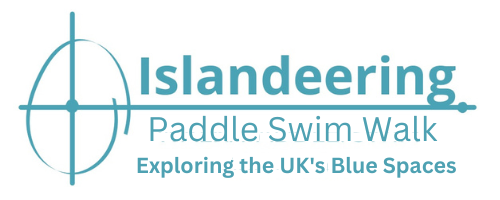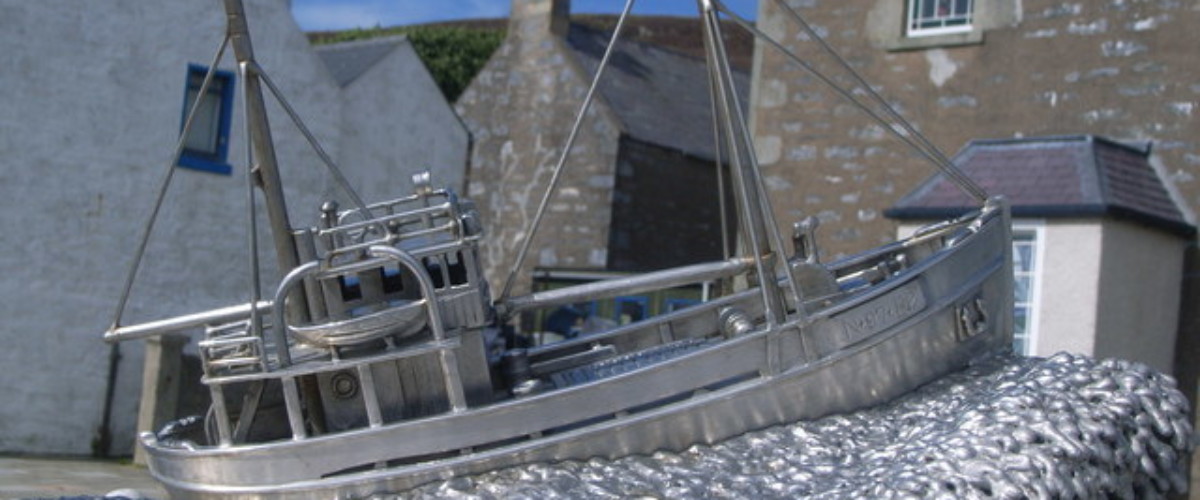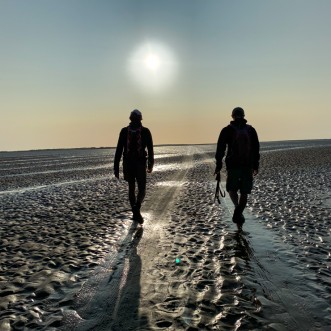Day 7 of our virtual island bagging journey
Today’s journey: high points of the islands of South Shetland
Today’s step-up height achieved: 884 metres
Leaving Mousa, after a noisy night under the stars with 13,500 storm petrels, the day was spent island bagging in south Shetland.
We started with the two main islands of the east coast. The first, Bressay (227m), was just a ten minute ferry from Lerwick to another world full of cliffs, quiet bays, hill and coastal walks and loads of freshwater lochs where we fished for a trout for lunch. Sheltering Lerwick harbour from the North Sea, its high point, the Ward of Bressay, was a great spot to see the whole of Shetland – we saw through the natural arch in the Gaada Stack on Foula in the Atlantic; the Out Skerries to the north east; Saxa Vord on Unst to the north; and south to Sumburgh Head; with Fair Isle further on. As this is a virtual island bagging trip the weather in Shetland is sunny every day.
Then on to Noss (181m) and one of the most spectacular wildlife sights in Europe, you don’t even have to like birds to be amazed by the 150,000 birds and chicks that occupy it in season – you do have to like the smell of the guano though the cliffs are quite literally white with the stuff. Noss is a Viking word meaning ‘headland shaped like a nose’, testament to the incredible patterns of erosion along its cliff edges.
Then on to the west coast and the uninhabited islands of Lady’s Holm (21m), Colsay (44m), South Havra (42m) and Horse (40m) that was previously known as Dog Island. We did stop for a break on the beautiful St Ninian’s (26m) enjoying the beautiful sandy beach of its tombolo. Then we hopped across the Bulta Sound from the uninhabited Cheynies (24m) on to Oxna (38m) and then Papa (32m) before reaching the inhabited East (81m) and West (65m) Burra’s, connected to each other by a bridge, from the island of Trondra (63m).
These islands shelter Scalloway, Shetland’s ancient capital, dominated by Scalloway Castle and the lovely harbour area. Scalloway Castle was built in 1600 by the tyrannical, Earl Patrick Stewart – his family were the ones that enforced a change from Norse to Scots rule. One of my favourite wartime stories (along with the Heroes of the Telemark) was this village’s unique role in World War Two. The ‘Shetland Bus’ was the name given to operations undertaken by the fishing boat crews who maintained a route between Shetland and occupied Norway to land undercover agents and supplies for the Norwegian resistance movement, and also brought refugees back to Shetland.
We popped into to the Scalloway Museum to find out more and to pay our respects at the the Shetland Bus memorial on the waterfront. Scalloway is also where William Johnson’s developed his theories on the tides and the moon – and ultimately how I’ve learnt the difference between neap and spring tides.
We didn’t want to rush through Scalloway and so booked into the Scalloway Hotel for a slap-up seafood dinner and a bit of a rest.
Cumulative total of island bagging height – Cumulative total of 5005m (target total = 47,000 metres)
Method of travel – climbing a ladder up the apple tree in the garden; step ups on a Belfast sink; indoor staircase



Difficult to read when it is written in light grey
Hi Yvonne, thanks for your comments. We are working on that as quickly as possible but as this is a self-funded project with no income it is taking a while to save up to get the designers to change things!! Stay healthy and well, Lisa